

The Perfect 5 to 7 Days in Belgium Itinerary
Last Updated on February 13, 2024
by Lizzie Fitzgerald
Disclaimer: This article contains affiliate links. That means if you click a link and make a purchase, we may make a small commission. As an Amazon Associate we earn from qualifying purchases. For more information, see our privacy policy.

Besides Brussels , Bruges and Ghent , it can be hard to know just what to include as part a 5 to 7 days in Belgium itinerary. Often said to be where the north and south of the continent meet, the ‘Heart of Europe’ is incredibly diverse with so many different sides.
As it is quite a small country, Belgium is usually very quick and convenient to get around. This means you can see and experience a lot in just a short space of time when you visit Belgium. Everywhere you go, you’ll find hidden gems, gorgeous architecture and some great food to fuel all your exciting adventures!
Table of Contents
How Many Days in Belgium?
Most tourists unfortunately only spend a couple of days in Brussels or Bruges before heading onto either Paris , London or Amsterdam . This obviously isn’t enough time to get a good feel for the country’s complex communities, their different languages, landscapes and identities.
5 days in Belgium is a great start as you can already fit in its vibrant capital and several of the major Flemish cities. As the distances and times involved aren’t too long, you won’t feel rushed despite seeing so many new places.
If you have 7 days in Belgium, that’s even better as you can also explore the country’s coastline and more of its bustling cities. This is a good amount of time to be able to get a really good feel for Belgium without feeling too rushed.

Getting To & Around Belgium
Due to its location at the crossroads of Western Europe , Belgium is very well connected to the neighbouring countries around it. The small nation’s efficient public transport system also makes travelling very easy and affordable.
One of the main places visitors arrive from abroad is Brussels Airport. Also known as Zaventem, it lies on the outskirts of the capital with flights departing to Africa, Asia and the USA all the time.
Located just outside of Charleroi in Wallonia is ‘Brussels South’; the country’s main cheap flight hub. Cunningly named to entice tourists, it is actually about an hour’s bus or taxi ride from BXL. You can organise airport transfers here.
Otherwise, most travellers arrive in Antwerp, Brussels, Bruges and Ghent by bus or train at one of their numerous stations. There are connections to these stations from neighbouring countries such as Lille in France, Amsterdam in the Netherlands or Luxembourg . You can view schedules here .
As the major Flemish cities lie roughly along the same line and are quite compact cities, taking the train and walking are the best ways to get around both Flanders and Brussels.
You definitely don’t need a car for your one week in Belgium as all of the stops are well-connected by the extensive public transit network.
If you have more than 7 days, you may find a hire car necessary to visit some of the smaller villages and forests in Wallonia. There is more information in the “Have More Time” section below.

5 to 7-Day Belgium Itinerary
This itinerary covers some of the country’s must-see sights in its three main regions of Brussels and Flanders. Whether you have 5 days or a full week, you’re going to see much more than most visitors do.
Day 1 – Brussels
After arriving in Brussels, most people head straight to the Grand Place to see the spectacular square and all its grand guild houses. One of the capital’s most iconic attractions, it lies right next to Manneken Pis – the city’s famous statue of a small peeing boy. You can also organise a walking tour to learn more about the city when you arrive.
Afterwards, you can stroll about cute neighbourhoods like Les Marolles or the chic Sablon. Both are home to interesting antique shops and some amazing old churches. Expensive chocolatiers such as Pierre Marcolini and Neuhaus can also be found here.
Not all too far away is the impressive Royal Palace of Brussels and several top-class museums focusing on music, Magritte and the fine arts. After taking some pics or perusing their extensive collections, head to Mont des Arts for one of the best views over Brussels.
Back down next to the Grand Place is the world-famous Delirium which has over 2,000 different beers for you to try. The busy bar is also conveniently located near happening nightlife spots like Saint-Gery and Place Sainte-Catherine.
On the way back to your hotel or hostel, grab a packet of andalouse sauce-coated frites and eat them in the Grand Place gloriously illuminated at night – a quintessential Brussels experience.

Where to Stay in Brussels
Motel One Brussels -This centrally-located hotel is perfect for mid-range travellers to Brussels. There are a range of rooms to choose from, an excellent location for exploring the Belgian capital, a great buffet breakfast on offer each morning and an on-site bar to enjoy.
Pillows City Hotel Brussels Centre – This is an excellent hotel for luxury visitors looking for a plush stay while visiting Brussels. They have a range of modern and comfortable rooms on offer, a fabulous breakfast available and plenty of amenities to ensure you have an amazing stay.
Appart’City Confort – Those who’d like to have their own flat while basing themselves in the Belgian capital will love this aparthotel. Offering a range of different apartments, they combine the comfort and amenities of a hotel with the convenience of a furnished flat.
MEININGER Bruxelles City Center – This hostel is a good option for those looking to save a bit of cash when visiting Brussels. Offering both dorms and private rooms, they have a great location and good self-catering facilities, as well.
Not quite what you’re looking for? Click here to browse more Brussels hotels!
Day 2 – Brussels
On the second day, take the time to dig a bit deeper in Brussels and enjoy more of the sites of this vibrant and diverse European city.
Spend your morning exploring the Atomium which lies a bit north of the city centre. This structure was built for the 1958 World’s Fair and it is a top attraction when visiting the Belgian capital. It takes about 40 minutes to reach her via metro from the city centre, so make sure to factor that into your daily plans. You can pre-book tickets here.
In the afternoon, spend some time strolling through the lovely Parc du Cinquantenaire and enjoy the vibes in this central green space. And then, as the day is beginning to draw to a close, spend some time exploring the diverse European Quarter where there are a number of interesting sites to see.
You also could take some time to enjoy some of the city’s vibrant street art and just simply enjoy the vibes of this bustling capital.

Day 3 – Ghent
Located very close to Brussels along the same train line as the town of Bruges further afield is the absolutely gorgeous Ghent. Although it is often overlooked in favour of Bruges, its small but scenic centre is certainly a must-visit if you have five days in Belgium.
Dominating its historic heart are three centuries-old towers that make for some fantastic photos and viewing from St. Michael’s Bridge.
Aside from entering St. Nicholas’ Church and seeing all its artworks, you can venture up to the top of the Belfry of Ghent and St. Bavo’s Cathedral. Both offer phenomenal panoramas of the city below and other towers beside them.
Strolling along the Graslei and Korenlei quays next to its winding canals is also lovely, especially when all their old buildings are majestically lit up at night. Here you can sit on their steps or at a cafe’s patio for a drink and take relaxing boat trips along the river.
After checking out the gigantic Gravensteen Castle nearby, make your way to the Dulle Griet for more strong Belgian beers in a traditional setting. You can also organise a bike tour to learn more about the city.
As Ghent is a larger, livelier university city, you could always stay a night here if you fancy experiencing more of its vibrant ambience or alternatively head back to Brussels or onwards to Bruges.

Day 4 – Bruges
If you have 5 days in which to explore Belgium, then you’re definitely going to visit the beautiful city of Bruges at some point. Very walkable, the fairytale Flemish town lies only an hour’s train journey northwest of Brussels. The historic centre of Bruges is a UNESCO World Heritage Site and it is absolutely charming.
Once you arrive, just slowly meander your way to the tall spire you see rising in the distance. One of its main landmarks, the Belfry of Bruges towers 83 metres in height and boasts sublime views from up high. You can also organise a walking tour and canal cruise of the historic centre to learn more about the history of the city.
At the foot of the thirteenth-century bell tower is the Grote Markt. Lined by attractive townhouses and lively restaurants, the ‘Venice of the North’s’ main square is always packed with people. The nearby Basilica of the Holy Blood in Burg Square also rightfully attracts lots of attention.
Of course, you can’t miss the Gothic Church of Our Lady and the imposing and beautiful town hall in Beuge, as well.
Other than visiting the Groenige Museum, most visitors spend their time ambling about its pretty cobbled streets and picture-perfect canals.
As Bruges empties at night, it is nice to stay if you want to see the atmospheric city in a different light. You can also take a dark side of Bruges tour in the evening.

Where to Stay in Bruges
Hotel Fevery – If you’re travelling on a mid-range budget, then this 3-star hotel located in city centre is a great choice. Situated in the heart of Bruges, they have a range of lovely rooms on offer and plenty of amenities to ensure your stay is a great one.
Boutique Hotel Die Swaene – This luxury hotel is a great choice for those who’d like a sophisticated and opulent stay while visiting beautiful Bruges. There are a number of fantastic rooms to choose from along with plenty of great amenities. They also have an unbeatable location for exploring the city.
Snuffel Hostel – Those travelling solo or on a tight budget (or looking for a great social atmosphere) will love this central hostel. There are a number of both dorm beds and private rooms to choose from, they have a fantastic location for exploring the best of Bruges and great common areas.
Not quite what you’re looking for? Click here to browse more Bruges hotels!
Day 5 – Bruges
Though Bruges is a relatively small town, it can be worth spending more than a day here to really get a good feel for this lovely little city. There is a surprising amount to do in Bruges so it’s an excellent place to spend your final day in Belgium (if you only have five days to spare).
You have the option of either spending this day seeing some of the sites in Bruges that you didn’t before or you could opt to go on a day trip – the town of Ostend on the coast is a great option.
The latter choice is a good idea for those who only are planning a 5-day itinerary as it allows you to see more of the country in your limited time. If you’re spending 7 days, then spending this entire day in Bruges is the best choice for you.
If you opt to stay in Bruges, then you can spend your day doing activities such as visiting the Choco-Story Museum or the Frietmuseum or even wandering around trying to source the best Belgian waffle in the city (not a bad task, if you ask me!).
Or, if you fancy something with a bit more punch, then consider heading out on a beer tour to sample some famous Belgian beers! If you’re not a beer drinker, then this food tour with a local is a good alternative.

Day 6 – Ostend & Belgium’s Coast
Travellers with a bit more time may want to visit the coast which is where Belgians go to relax, unwind and enjoy the refreshing sea breeze. As Ostend, its largest city, is located not far from Bruges, you can always combine the two rather than take a ninety-minute train from Brussels.
Rather ugly to look at, its wall of huge high-rises overlooks a long, wide beach that stretches the entirety of the country’s coastline. Aside from lounging on its sands in summer, you can walk or cycle along its broad boardwalk before stopping off for some superb seafood.
Ostend’s bustling centre is also packed with plenty of local shops, several museums and the stupendous St. Peter and St. Paul Church which dates to 1907. If you fancy your luck, there is a large casino that also puts on some top-class shows and entertainment acts.
A wonderful way to actually see all the country’s North Sea coastline is to hop on the Kusstram. Stretching 67 kilometres in total, it is remarkably the longest tram line in all the world. Along the way, you can always get off and explore the beautiful dunes around Bredene or enjoy some fine dining at the chic seaside resort of Knokke.
At the end of the day, you can take the train to Antwerp to give you a full day to explore there or either stay in Ostend or Bruges if you want to spend longer in the area.

Where to Stay in Antwerp
Citybox Antwerp – This 3-star hotel in the centre of Antwerp is perfect for those looking for a mid-range place to stay in this Belgian city. They have a great, central location along with several twin, double and family rooms on offer.
Hotel Rubens-Grote Markt – Luxury travellers will love this sophisticated hotel located in the centre of Antwerp. There’s a fab breakfast each morning, several clean and modern rooms available, a lovely terrace and private parking.
Yust Antwerp – If you’re looking for a social and budget-friendly place to stay in Antwerp, you’re sure to love this highly-rated hostel. Offering plenty of dorms and private options, there is also an on-site bar and cafe for guests to enjoy.
Not quite what you’re looking for? Click here to browse more Antwerp hotels!
Day 7 – Antwerp
Yet another popular place in Flanders that most people head to is the bustling port city of Antwerp. The undisputed diamond capital of the world, Belgium’s second-largest metropolis has loads of trendy bars, shops and restaurants for you to try out. You can book a walking tour to learn more about the city.
As with Bruges and Ghent, its historic main square is presided over by an enormous Gothic-style spire that towers over 120 metres in total. The tallest church in the Low Countries, the Cathedral of Our Lady displays some exquisite architecture while elaborate altars, artworks and effigies lie within.
If you want to delve more into the country’s rich artistic heritage then the nearby Rubenshuis is the best place to go. The former home and workshop of Peter Paul Rubens contains numerous paintings by the renowned Flemish master.
Also worth a visit is the Red Star Line Museum which presents another side of the city’s history. It instead looks at the lives of the shipping company’s two million or so passengers who passed through Antwerp on their way to the USA.
As it is known for its pounding nightclubs like Ampere and cool, classic bars such as Den Engel, Antwerp certainly has a lot to do once night falls. If you want to wake up early to catch a plane, however, it’s probably easier to head back to Brussels by train.

Have More Time?
If you have even more time left to explore the country (woohoo!), then there are countless other cool towns, cities and historic sites you can add to your Belgium itinerary.
While most travellers tend to stick to Flanders and Brussels, Wallonia also has some awesome cities to stop by. The most popular are Namur, its scenic capital, and Liege, its largest city, which boasts an absolutely incredible modern train station.
The WWI battlefields and cemeteries at Ypres are also interesting to check out as is Waterloo – the site of Napoleon’s final defeat in 1815.
Another option is to take a beautiful tram ride to Tervuren from Brussels and visit the fascinating Royal Museum for Central Africa. After seeing the lush, green park and woods outside, you can then head to the nearby Leuven – a lively university town home to lots of lovely architecture.
While the French-speaking region does have some interesting cities such as Namur, Liege and Mons, you can also visit small towns in the Ardennes like Dinant and Durbuy. As they are harder to reach by public transport, it’s best to rent a car so you can make the most of your time in Belgium.
From Brussels, it is only an hour’s drive to Dinant which lies along the banks of the Meuse River backed by dramatic rocky cliffs. Its stunning setting, soaring church and the colourful houses of its old town all make for some fabulous photos and viewing.

What a way to spend one week in Belgium or even longer! There is so much to see and do in this beautiful country that a week may well not seem long enough.
Are you planning to a trip to Belgium? Have any questions about this itinerary? Let us know in the comments!

Related Posts:

Bruges or Ghent: Which Belgian City to Visit?

The Perfect 2 to 3 Days in Bruges Itinerary

Amsterdam vs Brussels: Which City to Visit?
About Lizzie Fitzgerald
Lizzie is a writer for The World Was Here First. She loves travelling and discovering new places but also often finds herself returning to her favourite destinations. She has a particular affinity for Greece where she has visited countless islands and destinations on the mainland.
Leave a Comment Cancel reply
10 things you need to do in Belgium: chocolate, comics, castles and more

May 24, 2024 • 7 min read

Underrated Belgium brims with culture and history – yet its most appealing assets may be culinary ones, such as its irresistible waffles © NurPhoto / Getty Images
The land of golden beers, decadent chocolates and fluffy waffles, Belgium tempts you with its culinary delights. And its charm extends far beyond mere gastronomy.
The country has more castles per square kilometer than anywhere in the world, a rich and tormented history, and quirky attractions like peeing statues and dinosaur skeletons.
Among all these options, we’ve whittled down this list of the very best things to see, to do and – crucially – to taste in Belgium.

1. Sip a beer and learn about the art of brewing
It’s a small country, yes – but Belgium boasts a staggering 417 active breweries, crafting everything from monk-produced Trappist beers to spontaneously fermented sours like gueuze .
Since your first taste of Belgian beer will likely come at a bar, you can’t go wrong starting at the world-famous Délirium Café in Brussels , which offers over 2000 different beers for you to choose from.
You can enjoy a more intimate, more local taste of the country's drinking culture at Le Coq , the Brussels version of a Flemish “brown café,” a genre of watering hole defined by a cozy atmosphere and dark-wood paneling (hence the name).
There’s nothing fancy here: just a long list of classic beers and an ever-changing addition of craft brews. Find a seat – preferably at the counter – among the locals, and you’ll start a conversation in no time.
2. Taste pure happiness, in the form of world-famous Belgian chocolate
Consuming dark chocolate is scientifically proven to help against depression. Luckily, Belgians have perfected the science of chocolate making to an art.
In Antwerp , Dominique Persoone’s Chocolate Line will, to put it in technical terms, blow your socks off. Persoone didn’t earn his nickname of “punk chocolatier” for nothing: his skull-shaped Deadly Delicious pralines (cream or mousse-filled bonbons) mix forest fruits with hazelnut praline and violet feuillantine , while his homage to the British culture, Peas and Mint , is a dark chocolate shell filled with chocolate ganache and sourdough infused with mint, then decorated with…peas.
Local tip: You don’t need to buy a whole box: just ask for a selection of chocolates by the piece.

3. Discover the taste of the real Belgian waffles
No roundup of Belgian gastronomy would be complete without waffles, of which there are two varieties. Round and heavy and made with caramelized sugar, the Liège waffle is commonly sold at snack stands or from food trucks, and come with no toppings.
Rectangular, light and airy but slightly crunchy on the outside, the Brussels waffle has deep pockets that are perfect for toppings such as powdered sugar, whipped cream, chocolate sauce or pieces of fruit.
In Brussels, Le Funambule is the place to go for Liège waffles. In the seaside town of Blankenberge, t’Koethuis makes some of the best Brussels waffles in the country, with a slightly caramelized outside and intense vanilla taste. Paired with thick homemade whipped cream, it’s sheer bliss.
4. Find out why they should be called “Belgian fries” – and don’t hold back on the sauce
Fries (chips, for our British readers) are revered in Belgium, and almost every town and village has its own fry stand. And no matter where you are, they’re sure to be some of the most delicious in the world. What’s the secret? They must be fresh, not frozen – then twice-fried in beef fat, not oil.
This makes them extra crispy and golden on the outside and tender on the inside, with a slightly meaty taste that makes them simply addictive. Make them even better them with a delicious dipping sauce: a classic mayonnaise or ketchup, or the very Belgian andalouse , a mayo-and-tomato-based sauce with pepper and chili pepper.
Local tip: Friterie Tabora in Brussels has over 30 sauces to choose from, so you’re sure to meet your perfect match.
5. Dine in a tram and eat while watching Brussels go by
It’s pricey, true – but the Tram Experience is likely one of the most unusual dining experiences you’ll ever have.
On an old-school tram, you’ll trundle past the streets and sights of Brussels as you savor a fine-dining experience with menus created by renowned (and sometimes Michelin-starred) chefs such as Giovanni Bruno, Mallory Gabsi (of Top Chef France fame) or Tomayasu Kamo.

6. Take a deep dive into the country’s museums – starting with the dinosaurs
Whether your passion is for the arts, technology, music, history, military matters, toys…one of Belgium’s more than 1000 museums is sure to speak to you.
If you’re visiting the country with kids, start at the Museum of Natural Sciences and its showpiece: the skeletons of 30 iguanodons, a species of dinosaur whose remains were discovered in the Bernissart coal mine.
The specimens occupy a gallery fit for their mammoth size (iguanodons were up to 10m/33ft tall) that spans three floors, making it the largest dinosaur gallery in Europe. You cannot help but feel very small in front of them.
Other must-dos at this museum are the Gallery of Evolution (so beautiful it moonlights as an event space) and the Gallery of Humankind , focusing on the evolution of the human race.

7. Pedal through the homeland of Eddy Merckx
Gear up to hit the road in the homeland of cycling legend Eddy Merckx. Cycling is a real pleasure here, especially in Flanders, where the terrain is quite flat.
Whether you bring your own bike or rent one (major city train stations have a Blue Bike rental office), both Wallonia and Flanders are covered by a network of cycling “nodes.” This system of numbered junctions guides riders along safe and picturesque routes, allowing them to create their own journeys.
If you want to follow an established itinerary, a great option is exploring World War I sites with one of the 12 Flanders fields routes . Belgium saw some of the fiercest combat during that awful war, with over a million soldiers from 50 different countries wounded or killed in action.
Planning tip: The Legacy route passes through the site of the particularly brutal Battle of Passchendaele in 1917, as well as the Memorial Museum Passchendaele 1917 .
8. Seek out Brussels’...relief statues
Brussels’ most famous citizen is Manneken Pis (the “little peeing boy”). Originally a fountain, this bronze statue has graced the city’s streets since 1619 (although the one we see today is a replica, the original residing at the Brussels City Museum ).
The little imp even has its own wardrobe , with visitors having offered more than 1000 costumes on various occasions. No visit to Brussels is complete without paying him a visit.
Since Manneken is very close to the Grand Place , you’ll find the work surrounded by throngs of tourists (you won’t be able to miss it). But did you know he has a little sister? Just in front of Delirium Café, Jeanneke Pis squats in perpetuity to relieve herself, while Zinneke Pis depicts a dog urinating on a post.

9. Indulge in castle mania
With examples dating from medieval times to the early 20th century, Belgium is awash in castles. Bouillon Castle in the Ardennes is one of the oldest in the country, dating all the way back to 988.
Ghent’s imposing Gravensteen , the onetime seat of the counts of Flanders, is another famous example of medieval Belgian architecture. Yet nothing might beat the romanticism and grandeur of the Château de Beloeil in Hainaut.
With its extensive French gardens and illustrious history, the château dates to the 15th century, and was beautified and rebuilt several times over the centuries by the de Ligne family, who still reside onsite.
The opulence extends to the castle’s numerous works of art (paintings, tapestries, a collection of antique Chinese vases, precious furniture...) and its 20,000-book library.

10. Explore Belgium’s comic-book culture
Since the birth of the medium, Belgians have had a passion for comic books, and the country has been a powerhouse of creation. You’ve surely heard of Tintin and the Smurfs – and Belgian comics go much, much further than these iconic characters.
Hit the streets of Brussels with a free, self-guided comic-book walking tour . Different trails showcase the city’s many stunning comic book murals. If you’d like to delve deeper into comics culture, visit the Comics Art Museum , a treasure trove dedicated to Belgian comic-book artists past and present.
Planning tip: The museum is housed in a fabulous art nouveau building designed by famed Belgian architect Victor Horta. Don’t miss the atmospheric museum’s cafe.

Explore related stories

Aug 26, 2024 • 6 min read
See more of the Belgian capital for less with these 10 free experiences all over Brussels.

Aug 2, 2024 • 8 min read

Jun 12, 2024 • 7 min read

Feb 1, 2024 • 14 min read

Jan 8, 2024 • 8 min read

Sep 19, 2023 • 4 min read

Nov 1, 2022 • 3 min read
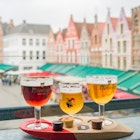
Jun 2, 2022 • 8 min read

Aug 25, 2021 • 5 min read

Mar 16, 2021 • 9 min read

20+ Belgium Travel Tips for First Timers & Must Knows Before You Go
Last Updated: July 6, 2023
*FYI - this post may contain affiliate links, which means we earn a commission at no extra cost to you if you purchase from them. Also, as an Amazon Associate I earn from qualifying purchases. Check out our Privacy Policy and Disclosure. for more info.
With a reputation upheld by the wonders of excellent beer, fine chocolates, world-class waffles, and most importantly: the invention of fries, Belgium is one of those countries that you (and your taste buds) can adore easily from afar.
But for the lucky ones who have a chance to see Belgium for real – there’s are many, many things you need to know.
While it’s easy to imagine Belgium as a whimsical comic strip of treats and delights, the reality can catch first time visitors off-guard, with many cultural quirks and easy tourist mistakes that can jade even the most optimistic of travellers.
Truthfully, it took me a while to fall for Belgium. With Brussels as my only point of reference on my first ever backpacking trip, I found myself caught in enough common traps that I wasn’t sure I’d ever visit again.
But now, a decade (and six visits later), I can safely say Belgium is an amazing country to visit…. you just need to be prepared.
So, in this post I’ll be sharing all THE must-know Belgium travel tips to ensure you love it on your first try. And first fry. I hope you find these Belgium tips useful!
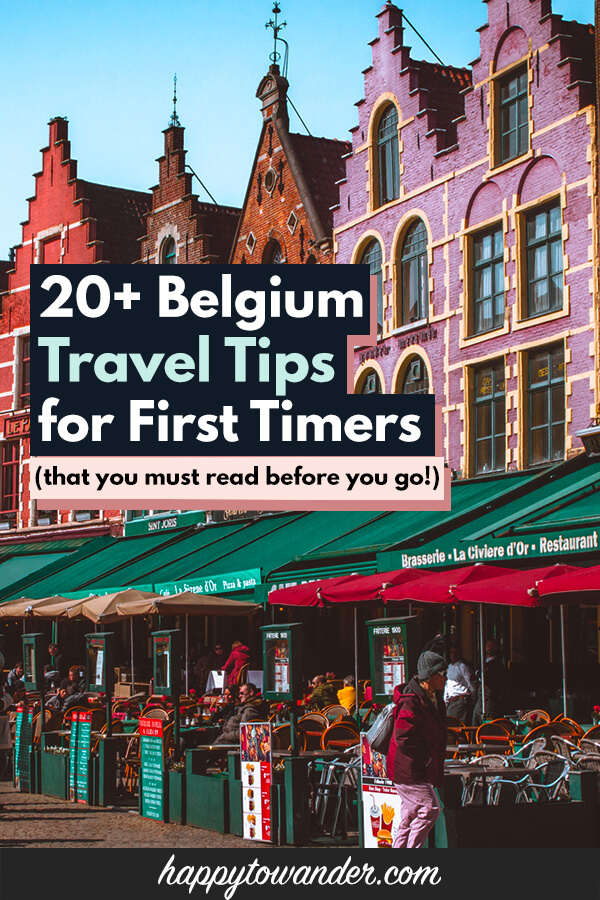
Save this list of Belgium Travel Tips for later!
You’ll be very glad you did.
1. Understand Belgium’s two main regions
First thing’s first, it’s important that you understand one of the more unique features of Belgium: the clear divide between its two main areas: Flanders in the North and Wallonia in the South – each with their own language.
Flanders is the Flemish speaking part of Belgium, so this is where they speak Flemish, or the local variation of Dutch… and Wallonia is the French-speaking part of Belgium, with the exception of a tiny part which speaks German.
So, while the official languages of Belgium are Flemish, French, and German, you’ll find that it’s more that different regions have different predominant languages, and not that everybody speaks all three all the time.
Brussels, the capital, is kind of the exception to this – it is officially considered bilingual so French and Flemish are both spoken, although from personal experience people definitely speak more French there.
Why is this important to know as a traveller? Well, you’ll encounter each of these official languages depending on where in Belgium you visit, so be sure to research for your destination so you know which language to say hello and thank you in… although English is also very widely spoken.
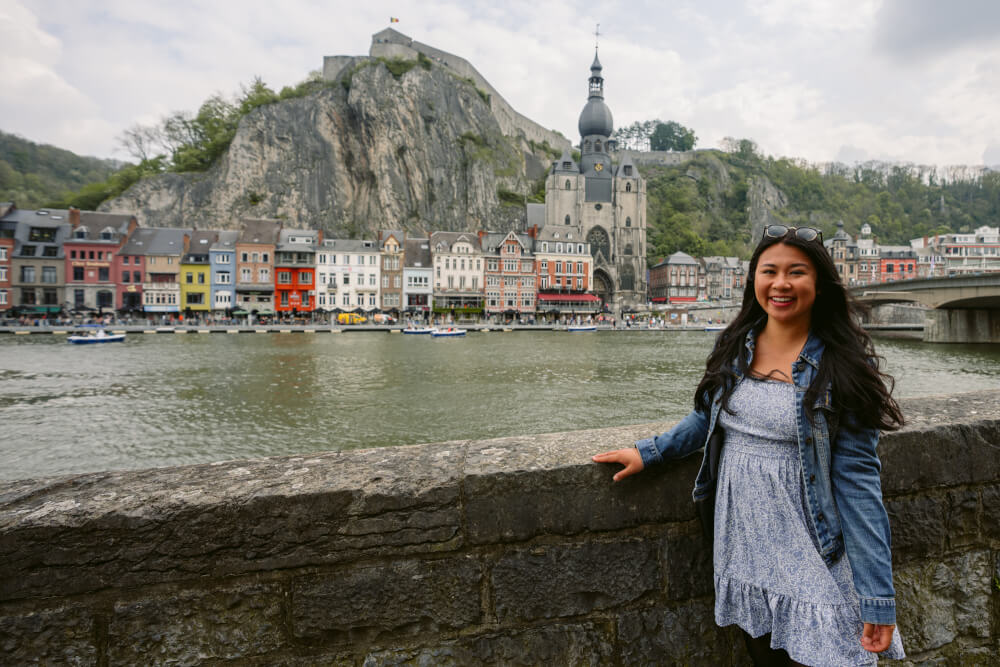
2. Beware that most places have a different name in French and in Flemish
Given these different languages, one of the most important things you need to know as a visitor is that destinations in Belgium will have different names in French and Flemish.
This can get especially confusing when you’re at train or bus stations, because both names be used, plus the names themselves are sometimes different to the English names that we know.
Take Antwerp for instance – we know it as Antwerp in English, but in Flemish it’s Antwerpen, and in French it’s Anvers.
Similarly, Leuven in French is Louvain, Ypres in Flemish is Ieper, and my personal favourite, de Haan is Le Coq.
Now most of the time the names are similar enough that you can logic your way through the situation, but in stressful scenarios like breathlessly running for a train, this additional hurdle can mean the difference of catching your train, or missing it as you stress and cry.
So, remember to learn the names of all your destinations in both Flemish and French. Here is a helpful table for some of Belgium’s more visited cities:
NOTE: This Belgium language tip also applies to train stations, so for example Bruxelles-Midi is actually the same station as Brussel-Zuid.
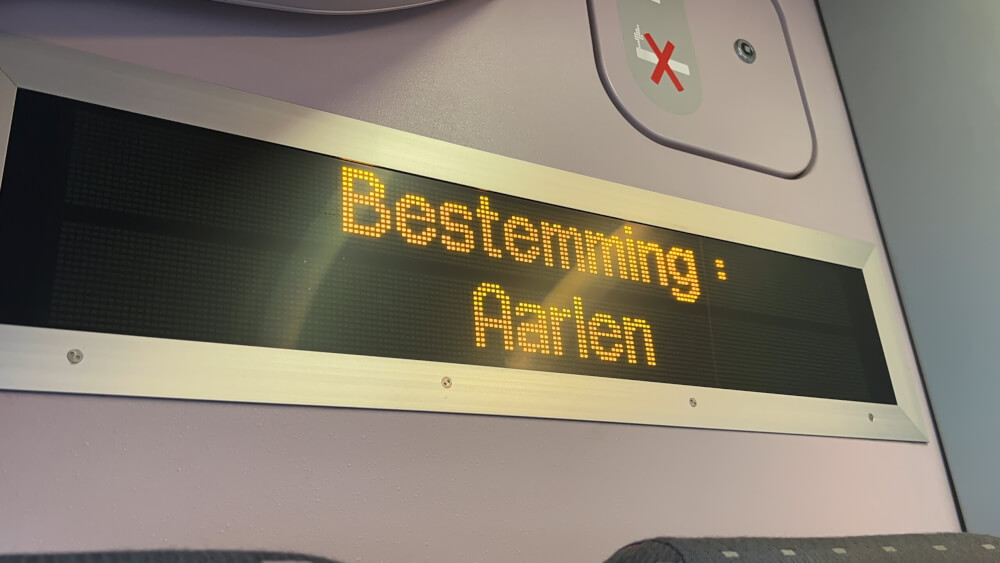
3. Don’t spend all your time in Brussels
One of the most fatal mistakes that first time visitors make in Belgium is they only visit Brussels.
Allow me to indulge in some aggressive through-the-screen shoulder shaking. Do not. I repeat… do not. Limit your Belgium trip to just Brussels.
Brussels is a big city with common ‘big city’ issues to match, from pickpockets and crowds to not-so-desirable areas. While it has a lot of unique museums and attractions to offer those who dig deeper, many first timers (myself included) will find it pretty boring to visit for more than a day or two.
So, I’d recommend adding smaller Belgian cities to your itinerary so that you’re better able appreciate the country’s charm: Bruges , Ghent and Antwerp are all great picks for 2-3 days, while Dinant and Leuven are great one day wonders.
Of course, there’s also plenty of natural beauty in Belgium like around the Ardennes that flies under most tourist radars.
All that to say, if there’s one single Belgium tip that stays with you from this post, let it be that there is MUCH more to see in Belgium than Brussels!
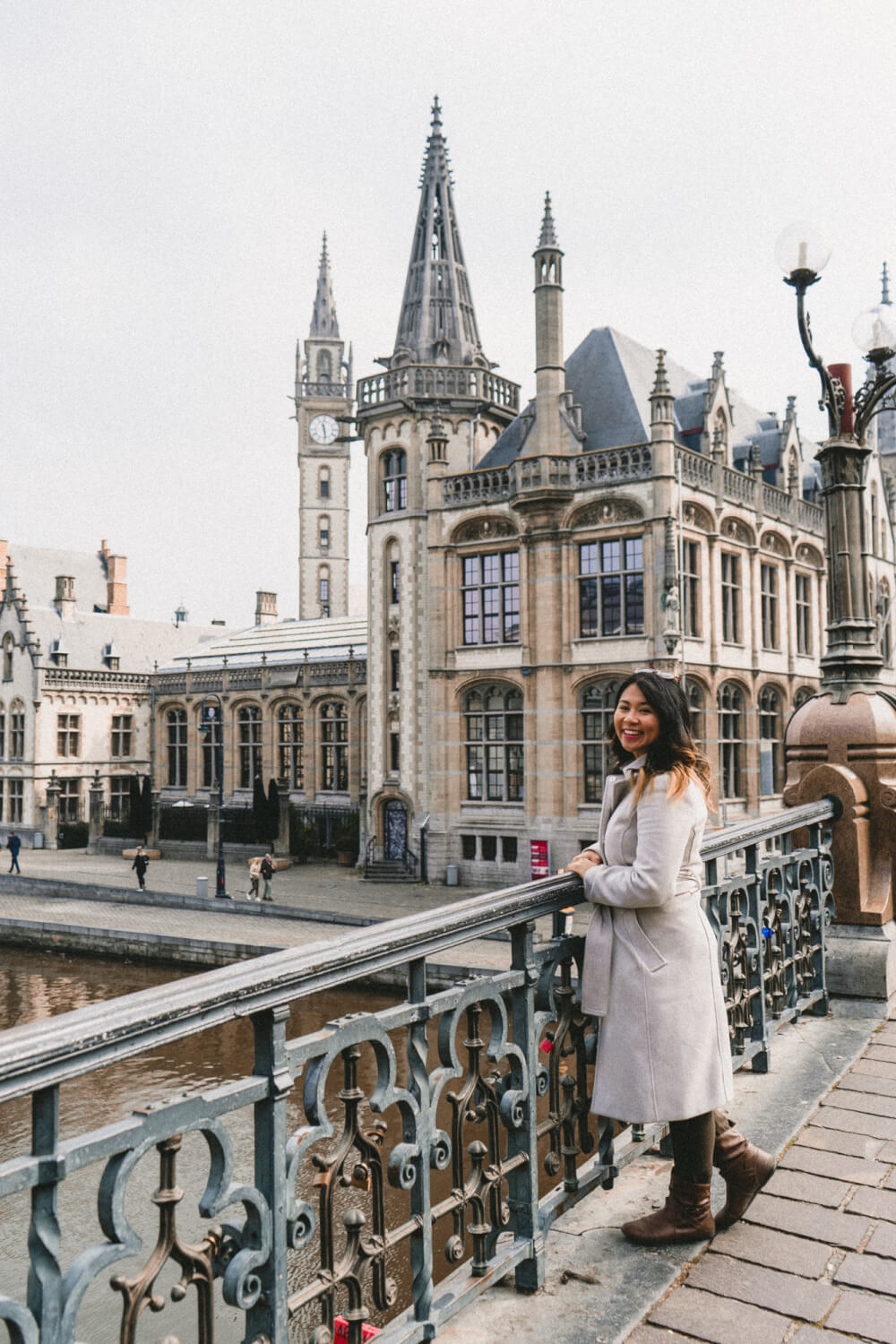
4. That said, if you do go to Brussels, do it properly
Brussels is often named among the most disappointing cities in Europe, and while I did agree with this claim once upon a time, I now find it kind of unfair.
The issue with Brussels (in my opinion) is that most visitors flock to the wrong places. Manneken Pis for instance is often billed as THE must-see attraction of the city, but in reality it’s a tiny little statue that takes less than 5 minutes to see.
Instead, where Brussels shines is the many, many unique museums and quieter neighbourhoods more removed from the tourist centre.
I do have a full article with Brussels tips if you want more pointers, so be sure to give that a read and see other mistakes to avoid.
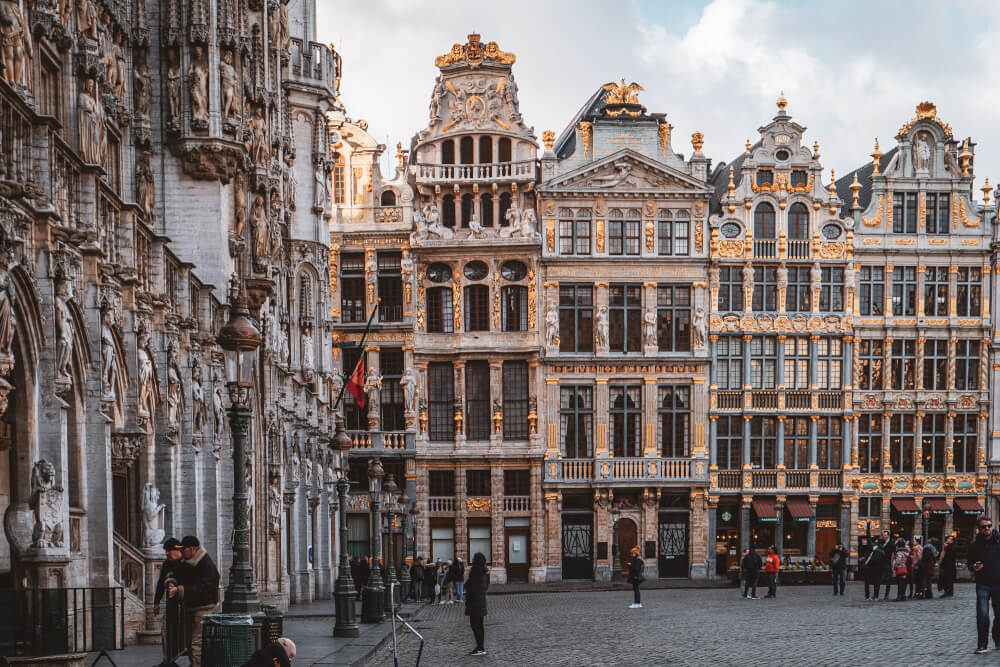
5. Plan your trip for shoulder or off-season
Now in terms of when to visit Belgium, I would recommend going in shoulder season or even off-season, just because a lot of the best places to visit are cities, which are usually enjoyable no matter the weather.
Summer season can get really busy with both international and domestic travellers, so for the least crowded experience, I would avoid the peak summer months from July to August.
Plus, your chocolate won’t melt as quickly, so there’s that too.

6. Plan your trip for quirky Belgian Festivals
If you’re really struggling to decide when to visit Belgium, I’d recommend looking into festivals and folk events to attend.
One of the most amazing things about Belgium is that it has a ton of unique cultural folk celebrations you won’t find anywhere else in the world.
There’s this one TikTok account I’m obsessed with called @LunaDiscoversBelgium with tons of videos showcasing these, but some of my favourites include:
- Giant omelette day in Malmedy : Every year on August 15, they literally make a giant omelette out of 10,000 eggs and dish it up for the public so everyone can have a piece.
- St Niklaas Peace Festival: Every year in the first weekend of September, they release hot air balloons in all sorts of unique shapes from the city centre.
- Aalst Carnival : An annual three day event in February where they go all out with crazy floats and costumes.
Lastly, it’s worth mentioning the Brussels Flower Carpet which takes place every 2 years and covers the main square in a giant carpet made out of flowers. How magical.
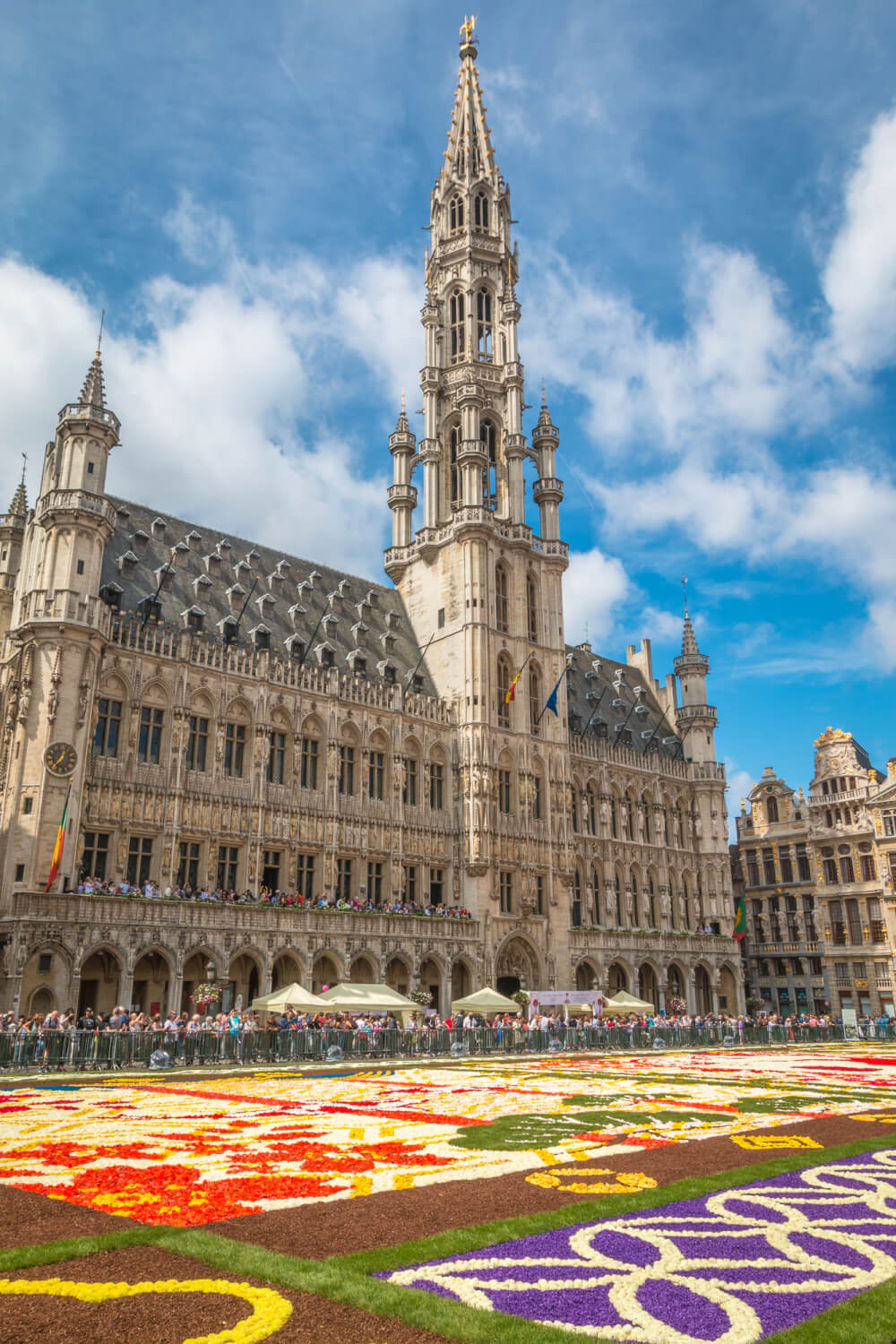
7. Take advantage of Belgium’s many train discounts
I’m a huge advocate for travelling around Belgium by train over renting a car for a few different reasons – first off, Belgium is incredibly well connected by train, and second, train travel here is astoundingly affordable, largely thanks to a number of enticing discounts.
Here are some to look out for:
Youth Ticket (Formerly Go Pass 1) : A ticket for those under the age of 26 that allows you to buy a single train ticket for €7.10 to any destination in the country. This is way cheaper than paying full-price!
Standard Multi (Rail Pass): Gives you 10 trips to use over the course of a year for €96, and these trips can be transferred to other people in your party, so this can be an easy way to save money if you’re travelling in a group. Also available as the Youth Multi (for those under 26) which is even cheaper.
Weekend Ticket: If you plan your day trips or side trips for a weekend, you can actually save 50% off your fare with a weekend ticket, which is valid for return trips that leave after 7pm on Fridays and return before Sunday.
Discovery Tickets: Give you 50% off your return train ticket, so long as you’re using it to visit an attraction that’s on their list. Similarly, you can use Bravo Tickets which give you 50% off if you’re going to one of the concerts or festivals on their list.
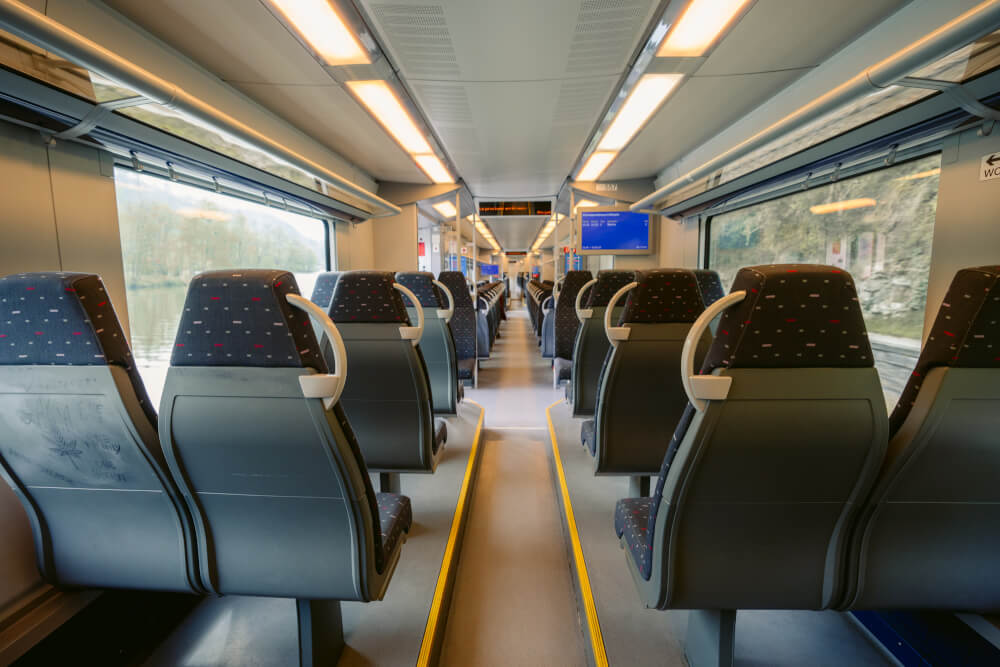
8. Take note of Belgium’s most beautiful train stations
Besides the amazing deals, another reason to take the train is simply that some train stations in Belgium are obscenely good looking.
Antwerp station for instance is considered one of the most stunning train stations in the world (can confirm), and Liège also has a cool station that was featured as Xandar in the first Guardians of the Galaxy movie.

9. Beware that cities have multiple train stations
Of course, don’t be fooled by the great deals and beautiful aesthetics – the Belgian train system can have its confusing moments too.
For instance, big cities often have multiple train stations, and if you’re not careful, you might get them mixed up (like I sadly have!) and miss your train.
Brussels for instance has three stations: Nord/Noord, Centrale/Centraal and Midi/Zuid, all of which are alternatively known by their French and Flemish names.
Similarly, Antwerp has a Central Station and a South station.
So remember, there’s often multiple stations, and you should research which ones are actually the closest to where you need to go.
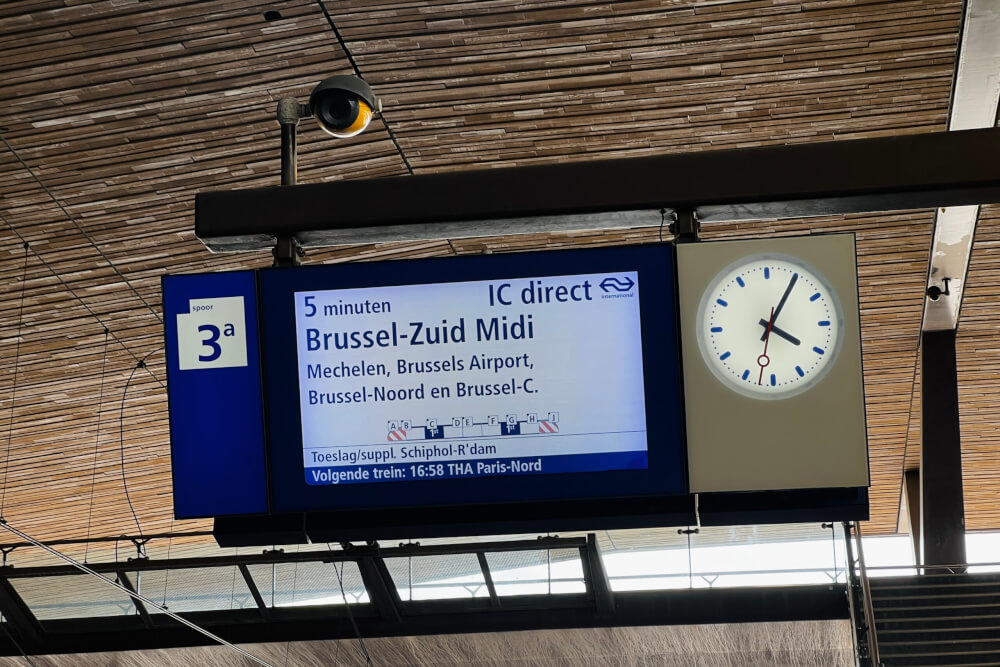
10. Remember: They’re Belgian Fries, Not French Fries
Alright, now let’s move onto some very important Belgium food and drink tips.
We’ll start with one that may save your life, because Belgians take this one seriously. So repeat after me: always always remember that when it comes to fries (AKA Frites), never call them French fries because they are, in fact…… *dramatic pause* Belgian.
The legend goes that it was actually American soldiers during WWI that mistakenly named them French fries, because they didn’t realize they were in Belgium and not France. We’ve gotten a lot more geographically savvy since then, so don’t make that mistake!
PS: The defining characteristic of these Belgian fries is they’re deep fried twice in animal fat. As such, vegans and vegetarians should know that traditional Belgian fries are not actually vegetarian, although there will almost always be a place where you can find a veggie-friendly option, so be sure to look that up in advance.
PPS: Getting sauce with your fries is non-negotiable. Mayonnaise is a common sauce but most places will have more adventurous options as well, although I’d advise against just getting ketchup because that’s boring.
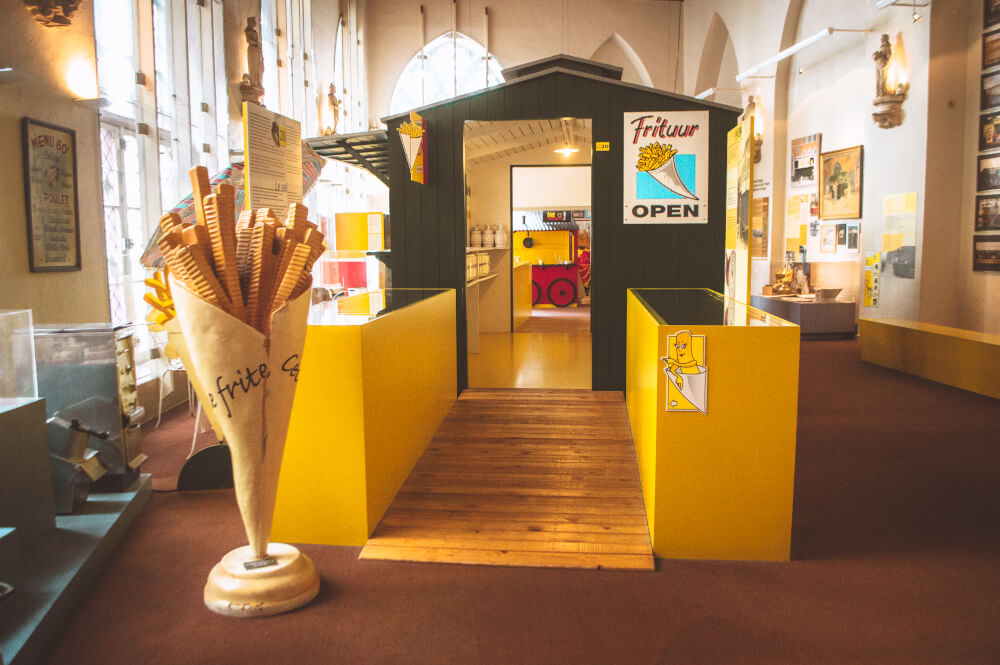
11. DIY your own chocolate tour around Belgium
Now another important Belgium tip? Shovel as much chocolate into your mouth as you possibly can.
Belgian chocolate has a tasty reputation worldwide, and when you’re lucky enough to be this close to choco-magic, you have to take advantage.
Now, the cool thing about Belgian chocolate shops is you don’t necessarily need to buy a whole box of chocolates – you can literally just get one or two pieces so this is a super fun way to sample chocolate from a bunch of chocolatiers without committing to a box.
NOTE: While going to different cities, be sure to also look for unique chocolate products in each place. Often chocolatiers will do fun chocolates that pay homage to their city in some way, like in Antwerp where there’s chocolate diamonds because of their diamond industry, along with severed chocolate hands based on a popular local legend.

12. Know the difference between waffle types
Next up – waffles! Of course I would dedicate a whole section of Belgium travel tips to waffles. I’m only human.
Now, while I know that waffles seem like an impossible thing to mess up, there are a few important must-knows to ensure you have the BEST possible waffles of your life during your Belgium trip.
So, here’s what you need to know: in Belgium, there are two main kinds of waffles:
- Brussels style waffle: Rectangular, fluffier waffles usually served with toppings like whipped cream and fruit
- Liège style waffle: Round, denser waffles studded with caramelized sugar, best consumed on their own
This is an important distinction because often you’ll come across touristy places that entice you with colourful displays of waffles, including Liège waffles topped with tons of fruit, which is a big waste in my opinion because they’re so good on their own.
So, if you see a place that sells them like that (usually to attract tourist eyeballs), you can deduce it’s probably not the most authentic.
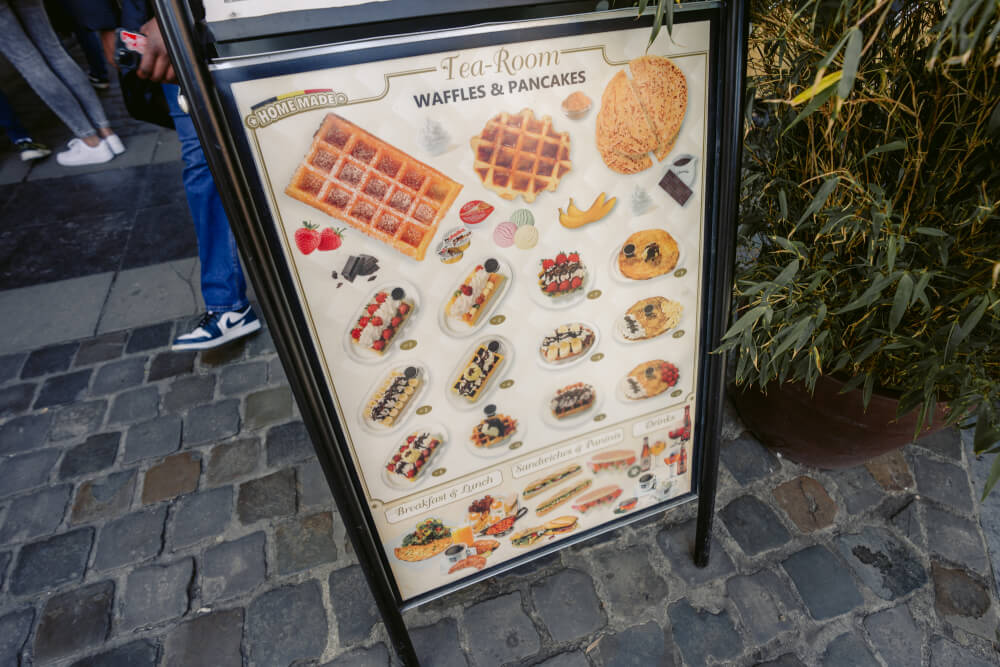
Another red flag is when they have signs like this:
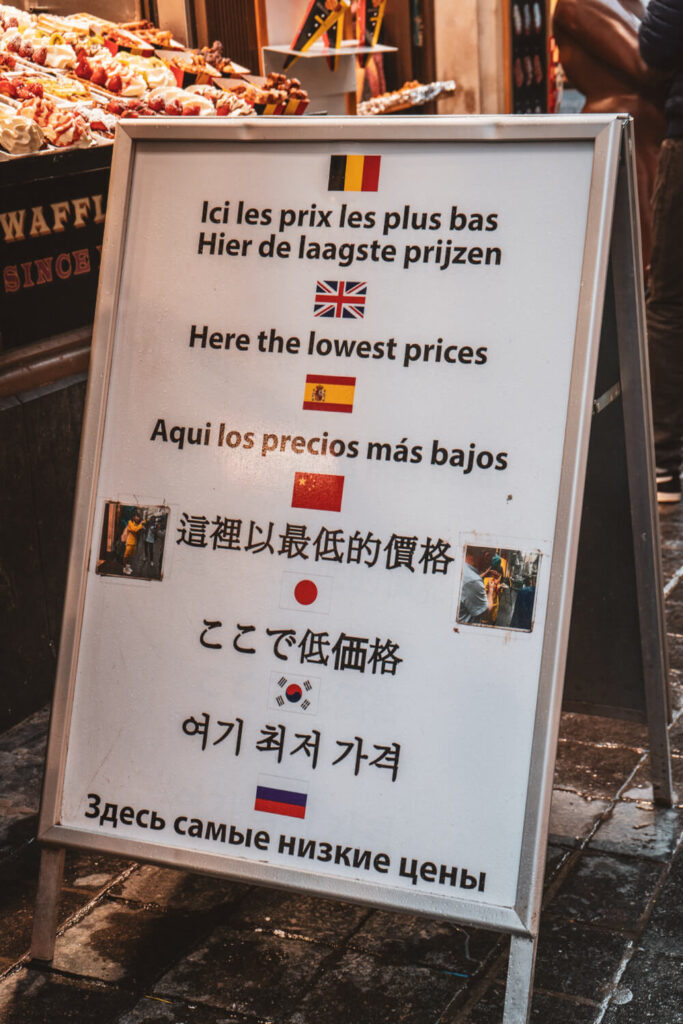
13. Learn the basics of Belgian beer
True story: I used to hate beer until I tried it in Belgium. Beers in this country are unreal, but there’s a few things you should know to enjoy them properly.
First – beware that some Belgian beers can be really strong. Stronger than you’re used to. Indulge accordingly.
Second, know they take their beers so seriously, they’re often served in their own special glass, which I love.
Next, know that Belgian beers are diverse and complex. Unlike Germany where they have a purity law that restricts what ingredients can go in beer, Belgians are always down to experiment, so there’s truly a type of beer for everyone, which is what makes beer tasting in Belgium so much fun. That said, if you haven’t found one you like yet, don’t give up!
Lastly, I would advise prioritizing beers you’ve never heard of. While it’s tempting to go for the big name Belgian beers you already know (e.g. Stella Artois or Leffe) during your trip, the most exciting thing about being in Belgium is you have access to all these unique beers you don’t have back home… so be sure to experiment a bit!
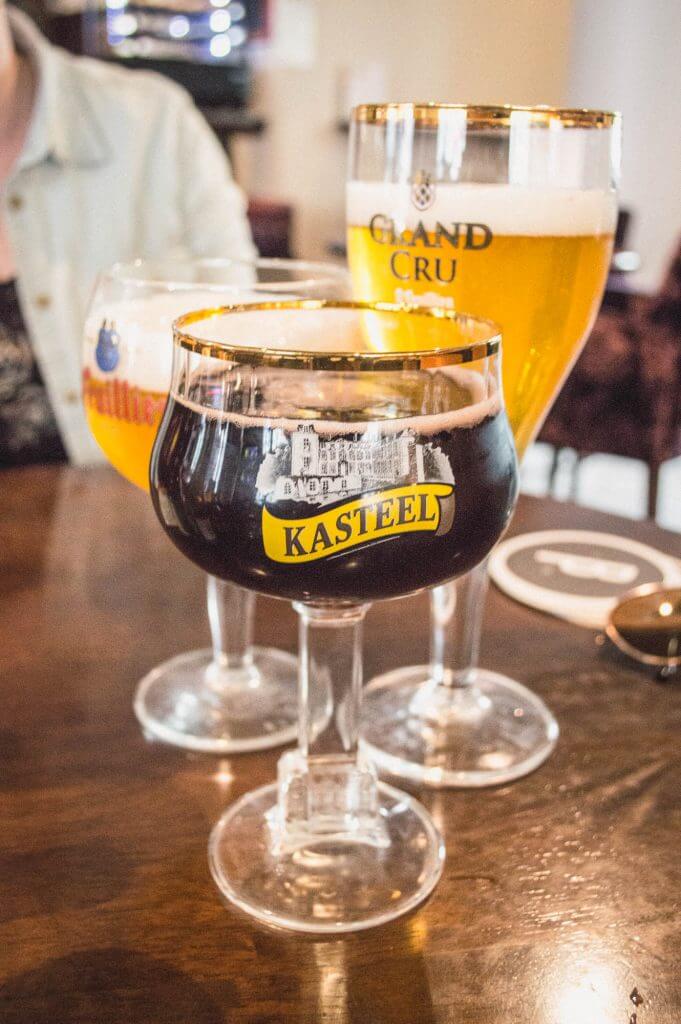
14. Give regional Belgian dishes a try
And of course, while Belgium is well known around the world for its signature snack foods and beer, we need to give a shoutout to other Belgian dishes as well.
Belgian food done right is comforting, hearty, and irritatingly delicious.
Here are a few of my favourites dishes:
- Vol au vent: A creamy meat stew served in a crispy pastry
- Carbonnade Flamande: A rich beef stew made with beer
- Moules-frites: Mussels with fries, another popular (and self-explanatory) treat consisting of shell-on mussels served in a tasty broth, alongside crispy fries. Plus if you play your cards right you can say you had mussels in Brussels!
- Boulets à la Liégeoise: Juicy meatballs in a sweet/savoury sauce, served with a hearty helping of Belgian fries.
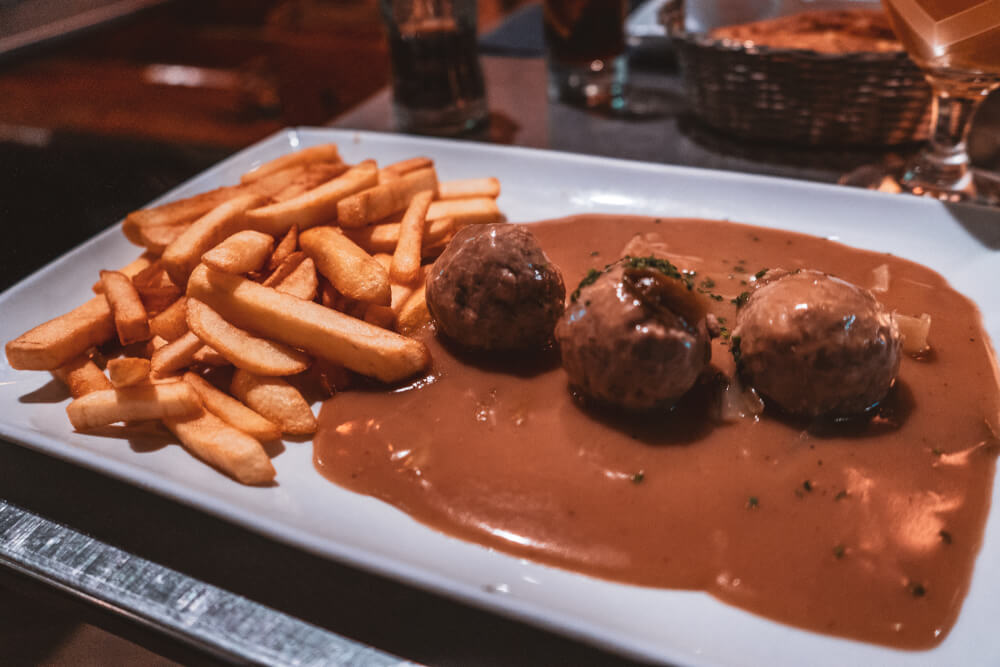
15. Carry coins for the bathroom
Another important Belgium travel tip involves public toilets.
Public bathrooms in Belgium are quite rare to be honest, and they usually require a small payment of 50 cents to a euro.
According to this one very angry Reddit thread , you sometimes even need to pay for the toilets at movie theatres (?!??!)
… So, all that said, be sure to have some coins on you so you don’t get caught out.
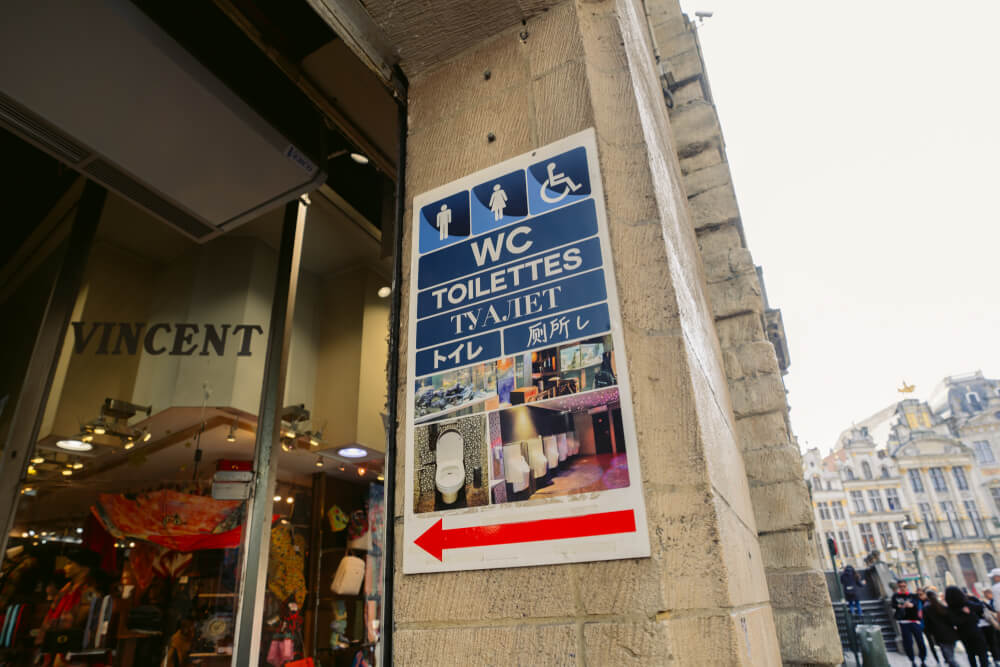
16. Be sure to also have at least a 1 euro coin too for museum lockers
I noticed in Brussels especially, a lot of the museums there were really strict about me bringing a regular school-sized backpack in, and said I had to leave it in a locker.
Most of these lockers require a one euro deposit that you get back, so just make sure you have that coin on you.
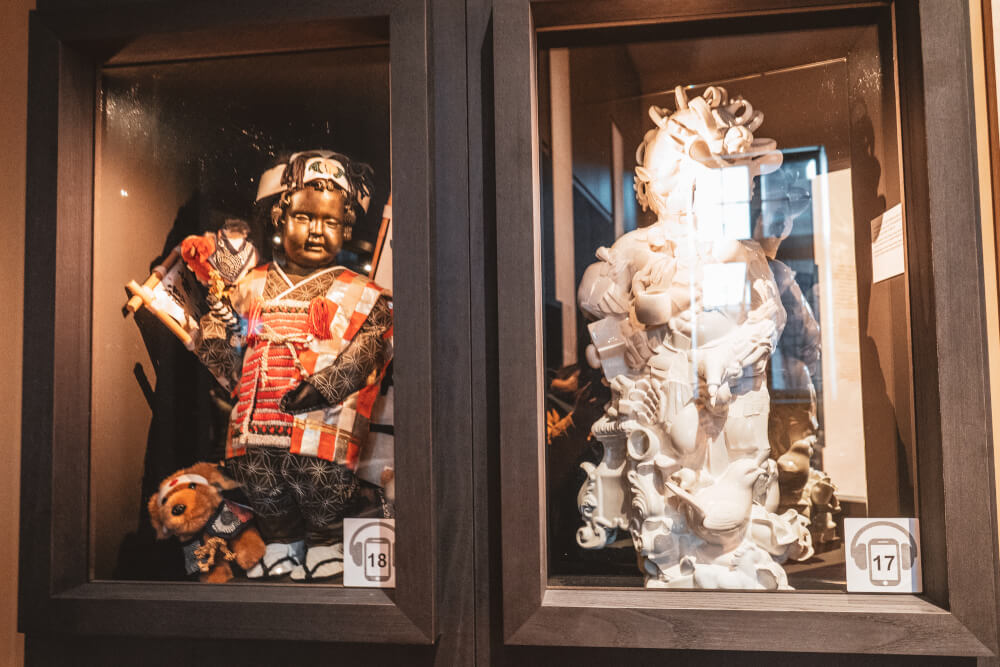
17. Look out for museum free days
One of the best ways to save money in Belgium is by scoping out free days in advance for major museums.
In Brussels for example there’s a lot museums free on the first Wednesday and first Sunday each month.
Antwerp has a similar thing for the last Wednesday of the month.
Liège also has some free museums on the first Sunday.
So if you’re looking to save some money, be sure to look into whether your destinations have these deals.
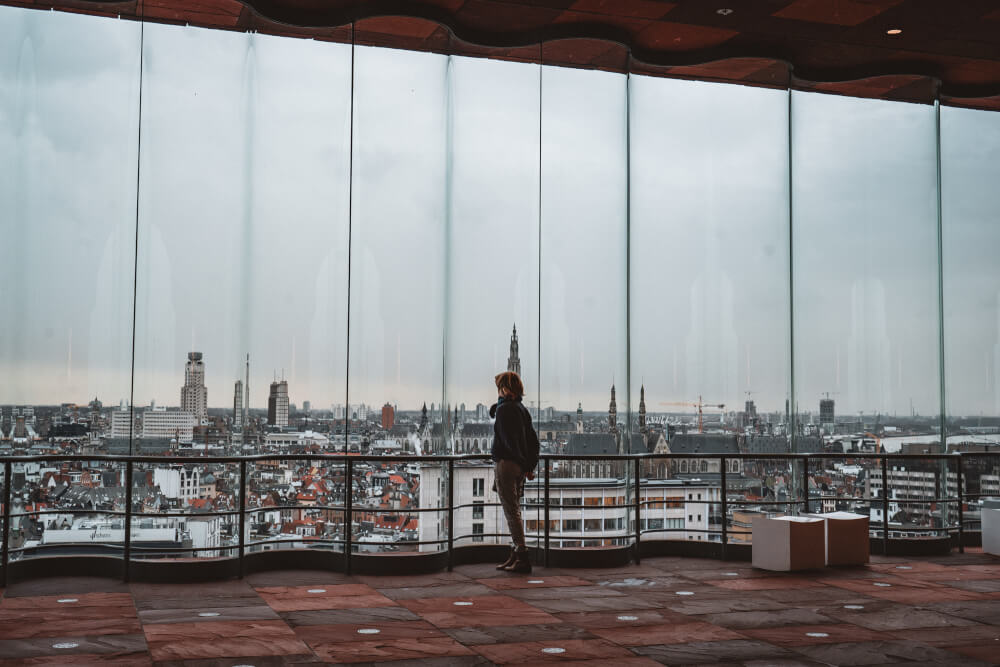
18. Save money on attractions by purchasing attraction cards or city passes
And if you can’t time your visit to coincide with free museum days, another great way to save big on attractions in Belgium is by purchasing attraction cards that give you access to multiple attractions for one set price.
Now, these are usually only worth it if you plan to visit a LOT of paid attractions, but I do think in museum-heavy cities like Brussels, it’s almost always worth it if you plan to see a lot.
I’ve personally used the Brussels card before and found it to be excellent value. If you’re big into museums like I am, then definitely look into it.
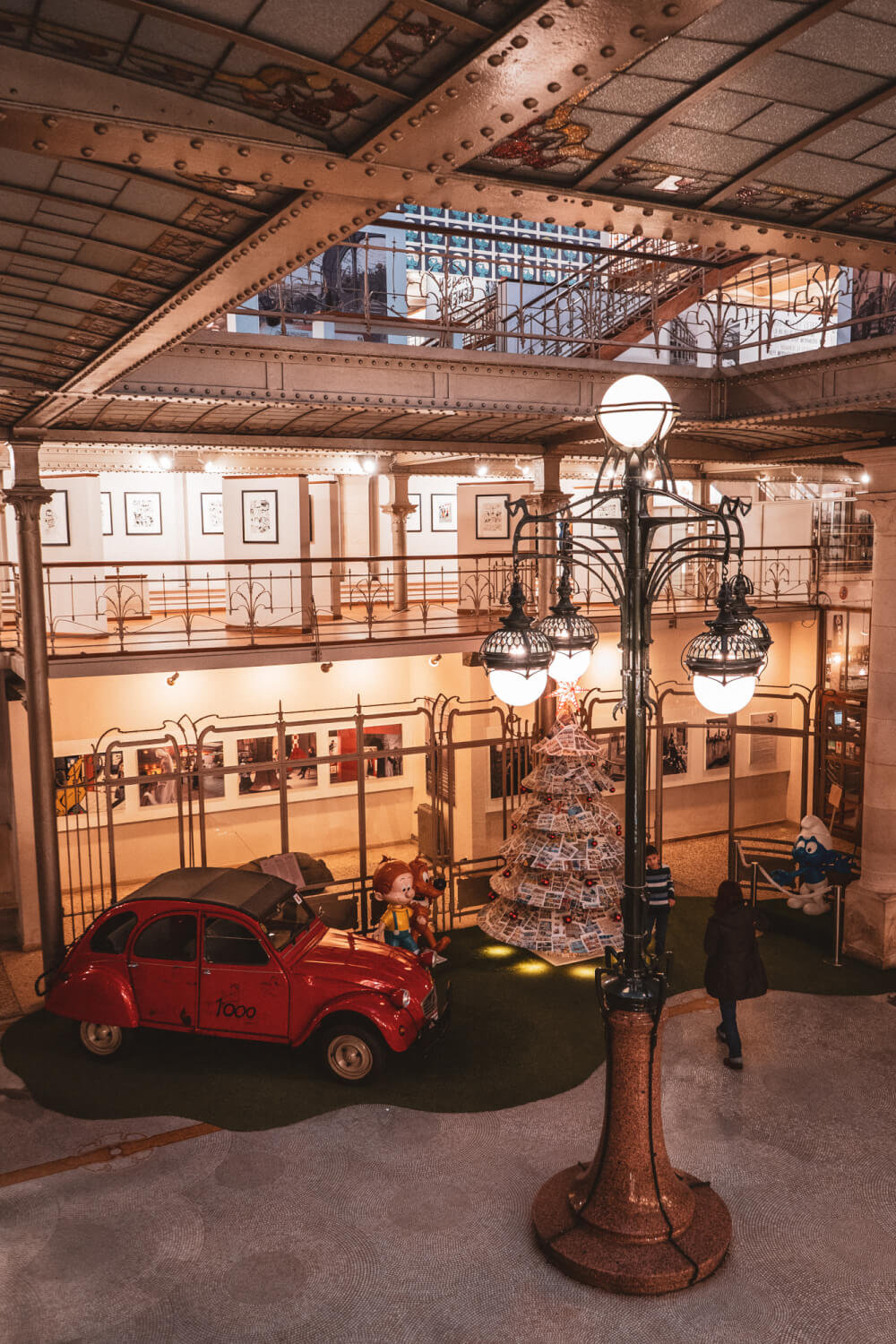
19. Be wary of Google Maps opening hours
Now ahh, for one of the more frustrating quirks from my Belgium travels.
It may just be bad luck, but on most of my trips in Belgium, I’ve encountered inaccurate hours listed on Google Maps and pretty much once a trip I would show up somewhere just to find it unexpectedly closed.
So, be sure to check on official websites whenever possible rather than just relying on Google Maps for hours.
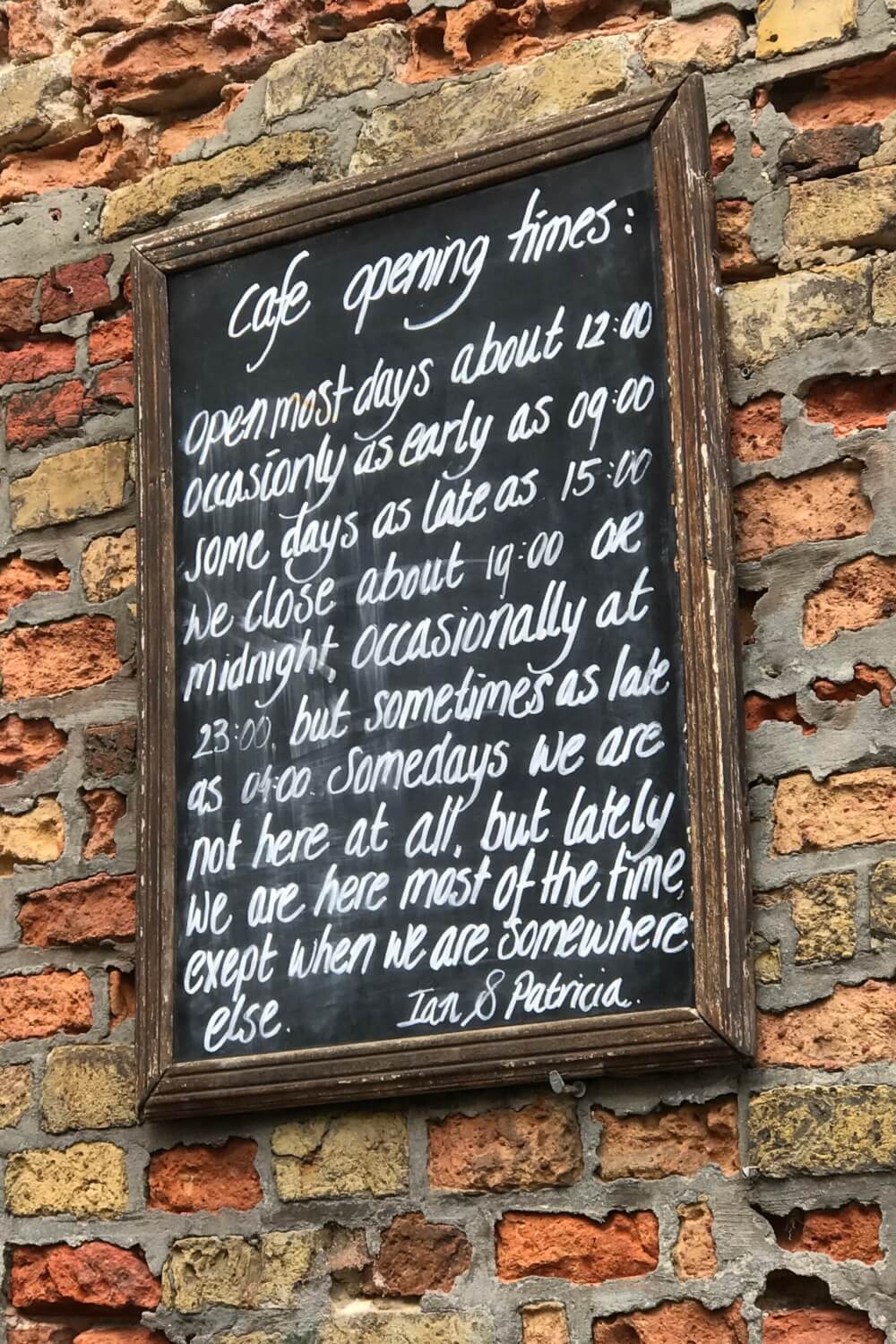
20. Beware of bikes & bike lanes
Much like in the neighbouring Netherlands, Belgians travel a lot by bike.
This therefore means many bike lanes, and (if you’re a clumsy, inattentive tourist like me) many opportunities to get run over by an angry Belgian on a bike.
So, while you’re walking, just take note of your surroundings and make sure you’re not accidentally walking in a bike lane. It happens way more often than you think.
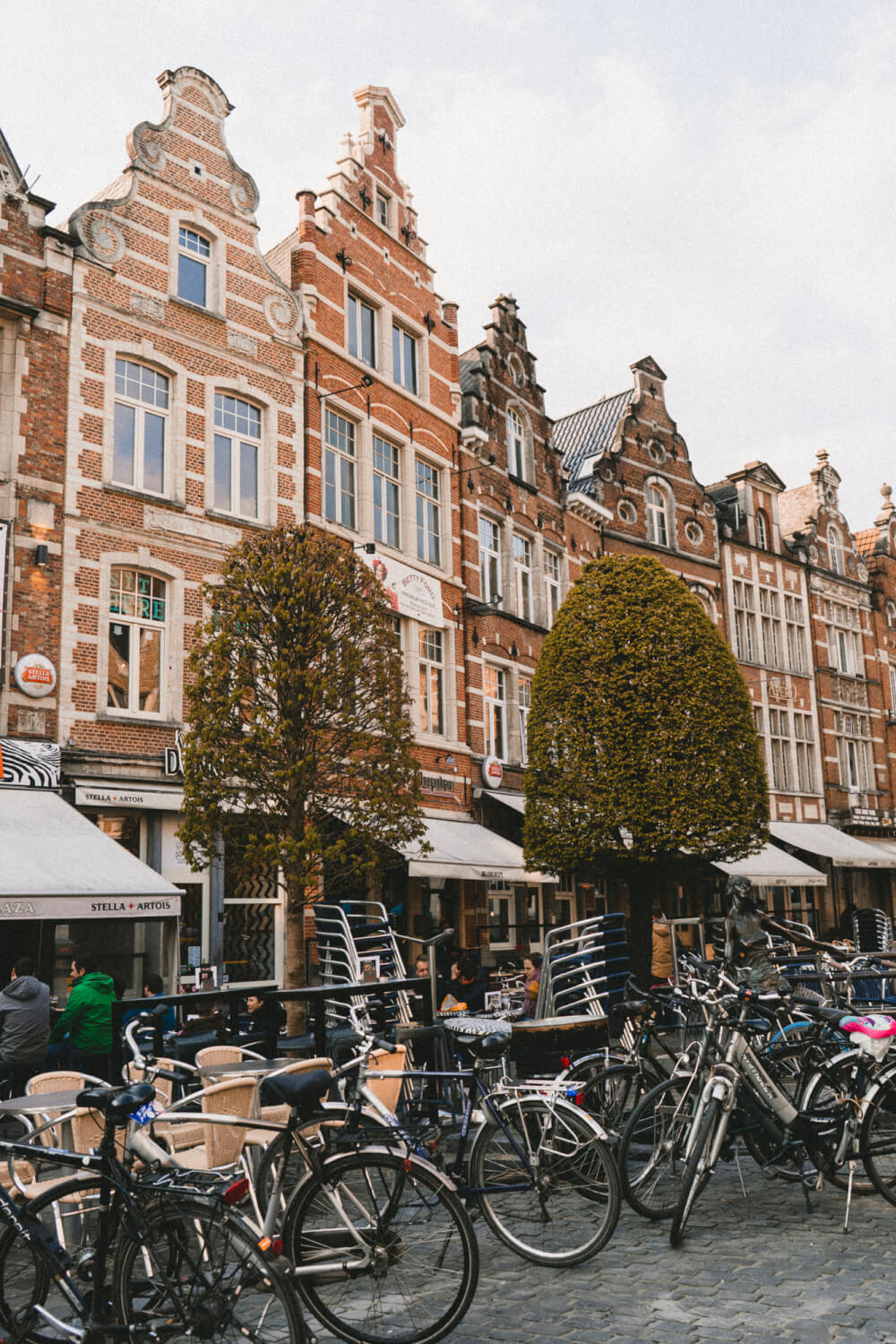
21. Pack a rain/windproof jacket
Belgian weather is notoriously moody, so no matter when you visit, I would advise packing a light rain jacket with a hood, just to ensure you have something in case the weather unexpectedly turns (which it often does).
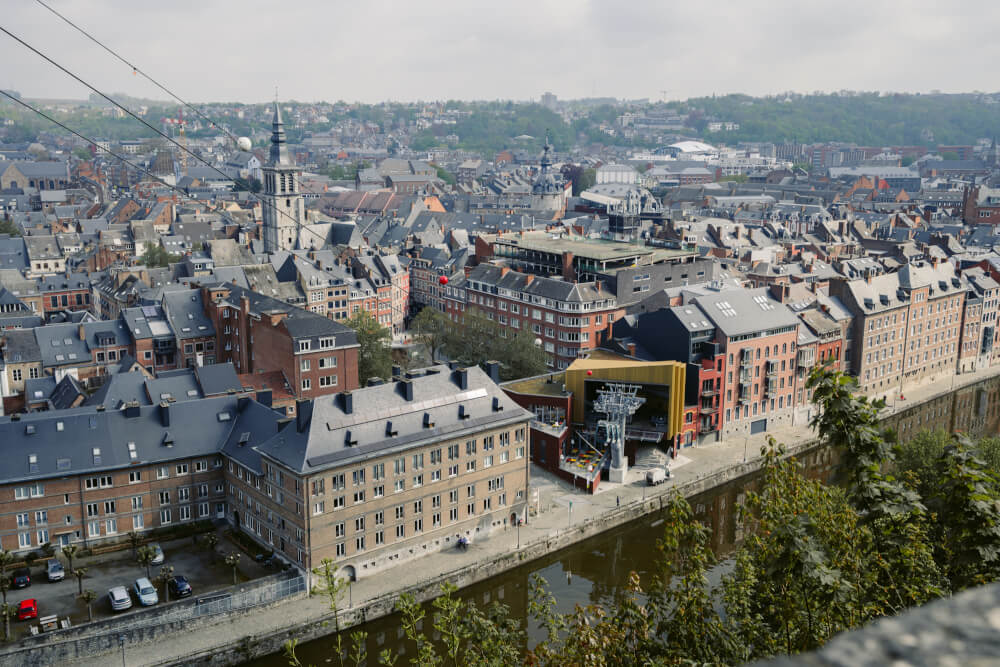
22. Prepare for Belgian humour
Lastly, I have to say that Belgians have a quirky and unique sense of humour. The fact that a tiny statue of a peeing child is their #1 tourist attraction is a testament to that. As are the accompanying statues of a peeing dog and girl, as well as the country’s giant intestine shaped hotel.
All that to say, come to Belgium for the beer, the waffles and the fries, but stay for the weird quirky stories and jokes.
The amount of times I’ve come across obscure lore while researching Belgian attractions is numerous, and it always makes visiting places a lot more fun.
Here are a few of my favourites:
- This infamous turf war involving nose-shaped candies in Ghent
- The many, many times that the Mannekin Pis in Brussels has been kidnapped then returned
- This brutal tale behind Antwerp’s name (which in Dutch, originates from the phrase ‘Throwing hands’)
- This Ghent bar that takes one of your shoes as a deposit for their most coveted glasses because they kept getting stolen
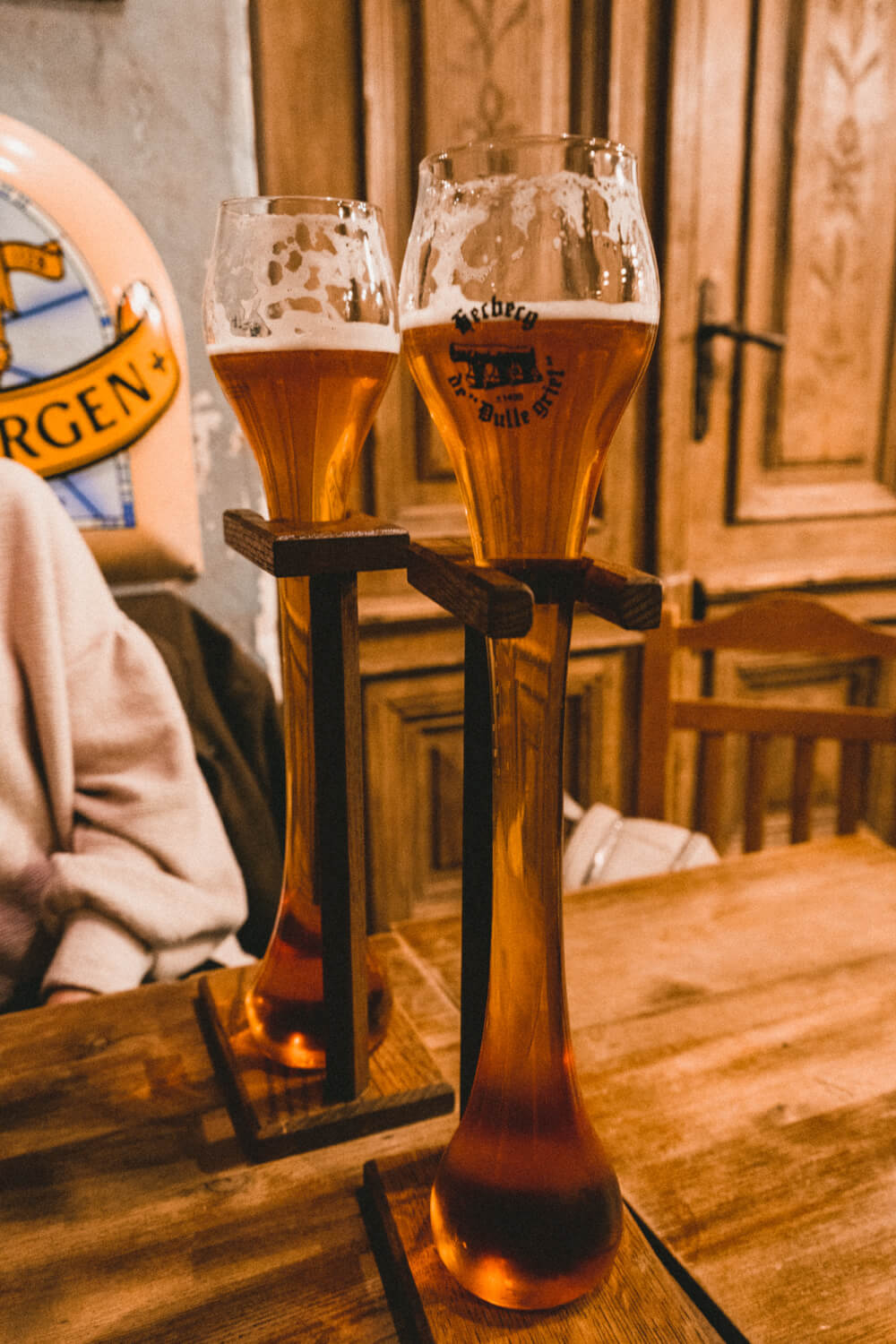
I hope this list of Belgium Travel Tips was helpful!
Quite frankly, if you made it this far, you deserve some kind of medal! This was a VERY long list of tips for Belgium, but if you have any more questions, let me know in the comments.
My Go-To Travel Favourites:
🧳 Eagle Creek: My favourite packing cubes
💳 Wise: For FREE travel friendly credit cards
🍯 Airalo: My go-to eSIM
🏨 Booking.com: For searching hotels
📷 Sony A7IV: My (amazing) camera
✈️ Google Flights : For finding flight deals
🌎 WorldNomads: For travel insurance
🎉 GetYourGuide: For booking activities
2 thoughts on “20+ Belgium Travel Tips for First Timers & Must Knows Before You Go”
Your review and tips about Belgium were written too late for me. I travelled there June 16 to 21 this year(2023). I enjoyed reading what you wrote.
Interesting insights into Belgium! I never knew that two different languages are used in this country. I am surprised to know that we have to pay to use public toilets in theatres.
Leave a Comment Cancel reply
By using this form you agree with the storage and handling of your data by this website. *

IMAGES
VIDEO
COMMENTS
A guide to planning the perfect 5 to 7 days in Belgium itinerary including things to do, where to stay and how to get around.
Belgium is petite. Fall asleep on a Paris to Amsterdam train and you could miss it all together – well, maybe, if you’re a heavy sleeper. With practical and cultural tips - from navigating three national languages to carrying cash - here's what you should know before going to Belgium.
With trains, cycle paths and a panoramic tram running along the coast, getting around Belgium is a breeze. Here's how to do it in style. Read article
The land of golden beers, decadent chocolates and fluffy waffles, Belgium tempts you with its culinary delights. And its charm extends far beyond mere… Here are some unmissable ways to savor Belgium’s history, beauty and creativity.
1. Go rafting or kayaking in the Ardennes. 2. Attend a music festival. 3. Go on a guided boat trip in Ghent. 4. Get lost in the Durbuy Labyrinth. 5. Participate in a chocolate-making workshop. 6. Horseback riding on a North Sea beach. 7. Sail through the tree-tops at Dinant Aventure. 8. Feel the wind in your hair while sand yachting. 9. Hiking. 10.
1. Understand Belgium’s two main regions. First thing’s first, it’s important that you understand one of the more unique features of Belgium: the clear divide between its two main areas: Flanders in the North and Wallonia in the South – each with their own language.